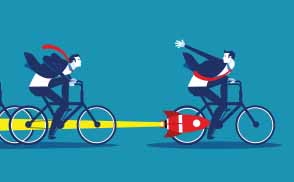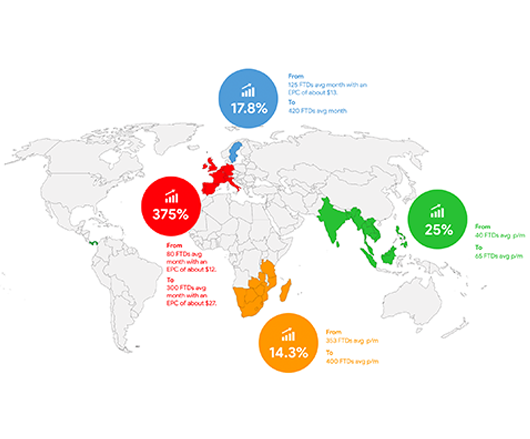Learn how you can take your conversion rate soaring with the right combination of SEO and affiliate marketing!
Search Engine Optimization (AKA SEO) can either be a walk in the park or the bane of your existence as an affiliate marketer. That means you are either hitting it off with major web-based engines like Google and Bing, or they are not even bothering with your website. It all depends on whether you are applying SEO best practices - as well as using them correctly.
According to HubSpot, about 75% of searchers going on search engines like the one powered by Google never go beyond the first page of the search results. That means two things. One, the competition can be insane, especially if your chosen niche is trendy. Two, managing to rank on that page is fundamental to your platform’s success.
Are you doing everything right? Not quite sure if you have missed anything?
Discover the 5 SEO best practices you should be applying right now!
- User Intent is A Marketer’s Best Friend
- Optimize Your Images
- Optimize Your Page Loading Times
- Improve Your Website’s User Experience
- Get Those Authoritative Backlinks
1. User Intent is A Marketer’s Best Friend


To choose the correct keywords for your marketing strategy, be it on your website or social media platforms, you will need to check what your target audience is interested in. By checking SEO-oriented tools such as Google Trends, SEMrush, or BuzzSumo, you will be able to check the most searched phrases among your preferred lead group.
Staying up to date on your users’ intent can further help you pinpoint which topics they are actively seeking answers to.
By using words like “buy”, “learn”, or “make”, search engines are able to decipher what kind of website users might be looking to find. If they chose “buy”, Google will present them with relevant companies, stores, or eCommerce websites. However, if they chose the word “make”, the search engine might not show them commercial websites.
“75% of searchers going on search engines like the one powered by Google never go beyond the first page of the search results.”
2. Optimize Your Images
Choosing great images that go along with the content you are creating is an important step, but you might be missing the bigger picture here.
Optimizing the images on your website means you will need to compress them to ensure heavy-weight images are not slowing down your page loading times, for example. Enabling browser caching can also help with loading larger images faster. You will also have to resize them per your platform if you use social media like Facebook, Instagram, or LinkedIn.
Alt texts also play an essential role in your affiliate SEO ranking, as you can add your chosen keywords to them. In addition, you can further make your website more accessible to those with disabilities by creating descriptive alt texts.
3. Optimize Your Page Loading Times


Few things can do in your affiliate SEO like poor page loading times. Delayed loading times are probably one of the biggest issues users encounter when reaching websites. Imperva Incapsula held a survey that consisted of 4,500 participants, where 35% said they were willing to wait between 3-5 seconds. 20% said waiting under 3 seconds was acceptable, and another 7% claimed they would leave immediately if the page would not load right then and there.
In total, 62% of users would not be willing to wait longer than 3 seconds on average – and honestly, who could blame them?
Make sure your page loading times are under 3 seconds. Faster websites have fewer people clicking away before you can hit them with your offers.
4. Improve Your Website’s User Experience


Yet another major factor in how Google ranks your website is your target audience’s behavior on it. Do they click away as soon as they have reached your homepage? Or do they have long sessions where they read the articles you have published? Do you have new and returning leads that get on your website?
Other than making sure your page loading speeds are up to par, you also need to provide the following aspects to give your leads a better user experience:
Sub-headers.
This aspect seems simple, but it makes your content more readable and helps Google understand it better.
Popups.
While these messages can be a great way to interact with your leads and encourage them to register, you will need to use them wisely. Too many popups could easily annoy your leads enough that they will leave your platform.
White Space.
Proper spacing between paragraphs makes your content easier to read and helps your readers maintain their focus on your message.
5. Get Those Authoritative Backlinks


Last but not least are the backlinks. Despite ongoing changes in Google’s algorithm, the search engine still considers them a key ranking factor and a testament to your website’s credibility. The more backlinks your website has, the better are its chances of making it to the top search results page.
However, not all backlinks are created equal. While some backlinks can help you up the ranking ladder, some may cause your website’s score to tank. This is why you need to focus on building authoritative backlinks rather than the other kinds of backlinks.
ROI Collective: An Affiliate Marketing Network That Empowers Affiliates
Get more of our affiliate SEO tips right here, right now!












